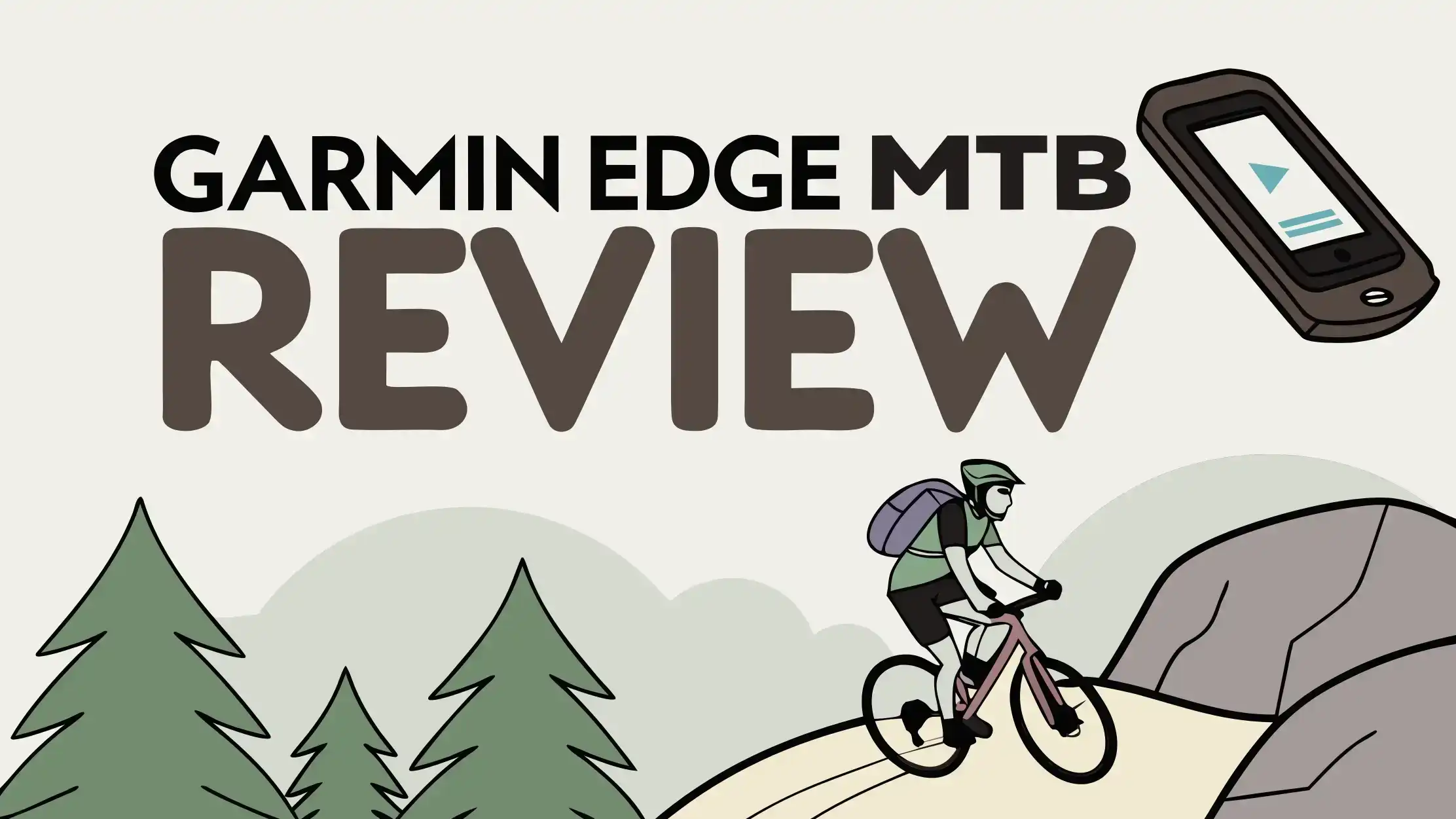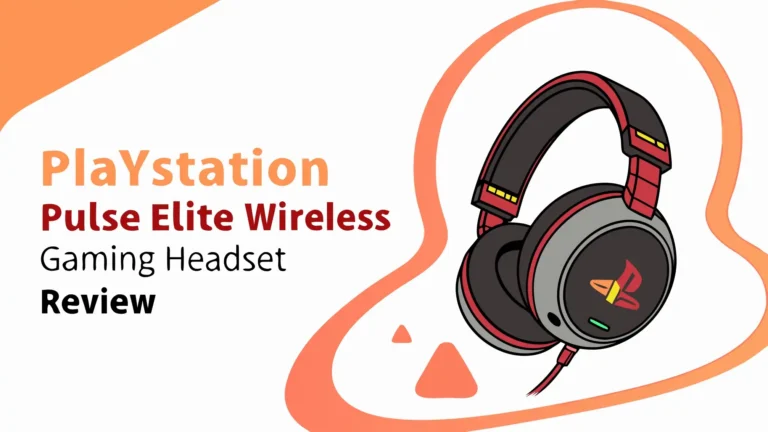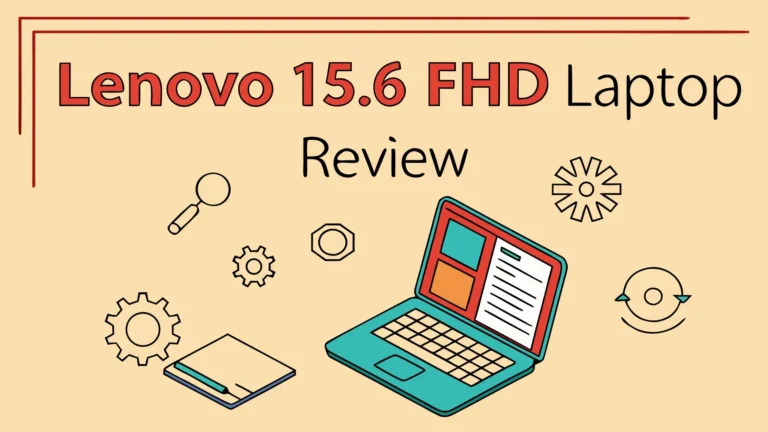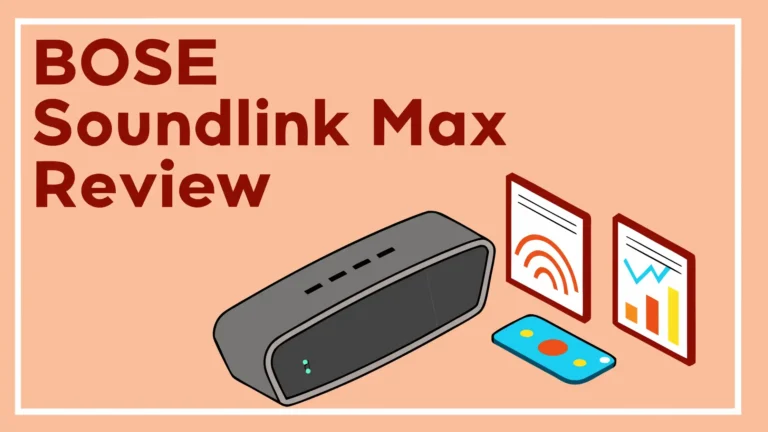The Garmin Edge MTB has arrived as a game changer for mountain bike enthusiasts. This specialized GPS bike computer brings mountain bike specific features that traditional cycling computers simply cannot match.
Modern mountain biking demands precision tracking and robust navigation tools. The Edge MTB delivers both with its 5 Hz GPS recording and full color trail maps.
This review covers everything you need to know about Garmin’s first dedicated mountain bike computer.
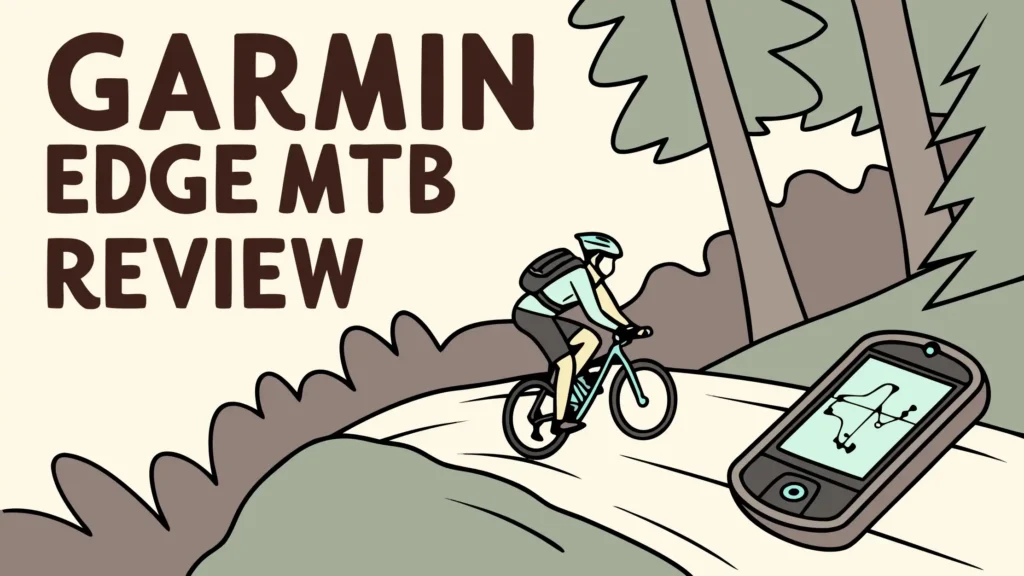
Key Takeaways
- Trail Specific Design: The Edge MTB features dedicated enduro and downhill profiles with specialized metrics for mountain biking activities
- Superior GPS Accuracy: Advanced 5 Hz GPS recording provides precise location tracking even under dense tree canopy
- Extended Battery Life: Up to 14 hours of recording time with power saving features for all day adventures
- Rugged Construction: Built with scratch resistant Corning Gorilla Glass and 7 button interface for gloved operation
- Comprehensive Mapping: Preloaded full color trail maps with popularity routing for discovering new trails
- Safety Features: Includes incident detection and live tracking to keep riders connected with their support network
Garmin Edge MTB Overview
- Compact, rugged GPS bike computer is purpose-built for mountain bikers with 7-button design and...
- Colorful, sunlight-readable display features scratch-resistant Corning Gorilla Glass to stand...
The Garmin Edge MTB represents a significant shift in bike computer design philosophy. Unlike traditional cycling computers that focus on road performance metrics, this device prioritizes trail navigation and mountain bike specific data.
Garmin recognized that mountain bikers have unique needs. Trail riders require robust GPS tracking under tree cover. They need dedicated downhill and enduro modes. Most importantly, they want a device that can handle the punishment of aggressive mountain biking.
The Edge MTB delivers on all these requirements. Its compact form factor measures just 2.13 inches diagonally. The 240×320 pixel display provides clear visibility in all lighting conditions. Seven physical buttons ensure reliable operation even with thick gloves.
Mountain bikers can finally track their adventures with the same precision as road cyclists. The device records elevation gain, descent data, and trail specific metrics that matter most to off road riders. This focus on mountain bike performance sets the Edge MTB apart from generic cycling computers.
Design and Build Quality
The Garmin Edge MTB showcases exceptional build quality designed for harsh trail conditions. Its rugged construction features scratch resistant Corning Gorilla Glass that withstands impacts from branches and debris.
The device weighs just 56.8 grams without the mount, making it one of the lighter GPS units available. Despite its compact size, the Edge MTB feels solid and well constructed. The seven button interface provides tactile feedback that works perfectly with mountain bike gloves.
Quarter turn mount technology ensures secure attachment to handlebars. The mount system locks firmly in place while allowing quick removal for charging or security. Multiple mounting positions accommodate different handlebar configurations and rider preferences.
Weather resistance meets IPX7 standards, protecting against rain and trail splashes. The device maintains functionality in temperatures ranging from 14°F to 140°F. This durability makes it suitable for year round mountain biking in various climates.
The sunlight readable color display remains visible even in bright outdoor conditions. Screen brightness adjusts automatically based on ambient light levels. Night mode reduces glare during early morning or evening rides.
GPS Performance and Accuracy
GPS accuracy represents the most critical feature for any mountain bike computer. The Edge MTB delivers exceptional performance with its 5 Hz GPS recording capability. This high frequency tracking provides precise location data even under dense forest canopy.
Traditional GPS units often struggle in challenging terrain. Tree cover, steep canyon walls, and weather conditions can disrupt satellite signals. The Edge MTB overcomes these limitations with enhanced GPS algorithms specifically tuned for mountain biking environments.
Multi satellite support includes GPS, GLONASS, and Galileo systems. This redundancy ensures consistent tracking regardless of geographic location. Riders experience minimal signal loss during technical descents or challenging trail sections.
The device stores up to 200 hours of activity data in its 32 GB internal memory. This capacity allows riders to record multiple long adventures without deleting previous activities. Automatic activity sync uploads data to Garmin Connect when connected to WiFi or paired smartphone.
Barometric altimeter provides accurate elevation data independent of GPS signals. This feature proves essential for mountain bikers who want precise climbing and descent metrics. The combination of GPS and barometric data delivers the most accurate elevation tracking available.
Top 3 Alternatives for Garmin Edge MTB
- Performance GPS cycling computer with mapping. Compatible with Vector (power meter). Power...
- Dynamic performance monitoring provides insights on your VO2 max, recovery, training balance,...
- Advanced GPS cycling computer with button controls combines superior navigation, planning and...
- Battery life: up to 26 hours in demanding use cases; up to 42 hours in battery saver mode
- Advanced GPS bike computer combines superior navigation, planning and performance tracking,...
- Find your way in the most challenging environments with multi-band GNSS technology that...
Mountain Bike Specific Features
The Garmin Edge MTB introduces several features designed specifically for mountain biking activities. Dedicated enduro and downhill profiles track metrics that matter most to trail riders. These specialized modes capture data differently than traditional cycling profiles.
Enduro mode focuses on overall ride performance including climb time, descent time, and transition periods. This profile recognizes that mountain biking involves different phases requiring specific tracking approaches. Riders can analyze their performance across complete trail systems.
Downhill mode emphasizes descent metrics including maximum speed, vertical descent, and jump detection. This specialized tracking helps riders improve their technical descending skills. The device automatically detects when riders are climbing versus descending.
Jump detection technology uses advanced algorithms to identify and record airtime. This feature appeals to riders who enjoy technical features and want to track their progression. Jump data includes airtime duration and estimated jump height.
Timing gates functionality allows riders to create custom segments for time trials. This feature proves valuable for training on specific trail sections or competing with friends. Riders can set virtual checkpoints anywhere on their favorite trails.
Trail difficulty ratings help riders choose appropriate routes based on their skill level. The device displays trail ratings from various sources including Trailforks integration. This information helps riders discover new trails that match their abilities.
Battery Life and Power Management
Battery performance stands as a crucial consideration for mountain bike computers. The Edge MTB delivers up to 14 hours of continuous recording with all features enabled. This capacity supports full day adventures including shuttle runs and multi lap sessions.
Power saving modes extend battery life for ultra endurance activities. Battery saver mode can provide up to 26 hours of operation with reduced GPS tracking frequency. This flexibility accommodates different riding styles and duration requirements.
USB C charging provides fast and convenient power replenishment. The device charges completely in approximately 2 hours using standard USB C cables. This modern charging standard eliminates the need for proprietary cables.
Battery indicator displays remaining power in both percentage and estimated time remaining. This information helps riders plan their activities and avoid unexpected power loss. Low battery warnings provide advance notice before shutdown.
Smart charging features optimize battery health over long term use. The device manages charging cycles to maximize battery lifespan. These algorithms prevent overcharging and maintain optimal battery performance.
Solar charging options are not available on the Edge MTB model. Riders requiring extended battery life should consider portable power banks or higher tier Garmin models with solar capabilities.
Navigation and Mapping
Navigation capabilities represent a standout feature of the Edge MTB. The device comes preloaded with full color trail maps covering popular mountain biking destinations. These detailed maps provide essential trail information including difficulty ratings and point of interest data.
Turn by turn directions guide riders through complex trail systems. The device provides audio prompts and visual cues to keep riders on track. Navigation works offline using stored maps, ensuring reliability in remote locations without cellular coverage.
Popularity routing suggests trails based on user activity data. This feature helps riders discover new routes that match their preferences and skill level. The algorithm considers factors including trail difficulty, distance, and user ratings.
Breadcrumb navigation creates a digital trail showing the route taken. Riders can follow this breadcrumb trail back to their starting point or retrace interesting sections. This feature proves valuable when exploring unfamiliar trail systems.
Custom route creation allows riders to plan adventures using Garmin Connect or third party platforms. Routes sync automatically to the device when connected to WiFi or smartphone. Riders can create routes based on distance, elevation gain, or specific trail features.
Waypoint marking lets riders save important locations including trailheads, water sources, and scenic viewpoints. These waypoints appear on the map display and can be navigated to directly. The device stores unlimited waypoints in its internal memory.
Performance Tracking and Metrics
Performance tracking on the Edge MTB goes beyond basic speed and distance measurements. The device captures mountain bike specific metrics that help riders analyze and improve their trail performance. These specialized data points provide insights unavailable from traditional cycling computers.
Vertical oscillation tracking measures how much riders bounce while pedaling. This metric helps identify efficiency improvements and suspension setup optimization. Lower vertical oscillation typically indicates better pedaling technique and bike setup.
Ground contact time tracks how long pedals remain in contact during each pedal stroke. This advanced metric helps riders optimize their pedaling cadence and technique. Consistent ground contact time indicates smooth, efficient pedaling.
Power meter compatibility supports various power measurement devices. Riders can connect crank based, pedal based, or hub based power meters to track wattage output. Power data helps riders train more effectively and pace their efforts during long rides.
Heart rate monitoring works with chest strap and wrist based sensors. The device calculates training zones, recovery metrics, and effort distribution. Heart rate data combined with power measurements provides comprehensive training insights.
VO2 Max estimation calculates aerobic fitness levels based on performance data. This metric tracks fitness improvements over time and compares riders to similar demographics. VO2 Max data helps riders set realistic training goals.
Safety and Connectivity Features
Safety features provide peace of mind for riders venturing into remote trail systems. Incident detection automatically sends emergency messages when the device detects a crash. This feature can potentially save lives in serious accident situations.
Live tracking allows friends and family to follow rides in real time. Supporters can view rider location, speed, and route progress through web based tracking pages. This feature proves valuable for long solo adventures or competitive events.
Group messaging enables communication between riders using compatible Garmin devices. Riders can send predefined messages, location updates, and status information to other group members. This feature works without cellular coverage using device to device communication.
Weather alerts provide advance warning of changing conditions. The device displays current conditions, hourly forecasts, and severe weather warnings. This information helps riders make informed decisions about ride duration and route selection.
Find my device helps locate lost or misplaced units. The feature triggers audible alerts and displays location information on connected smartphones. This functionality proves valuable when devices are dropped or forgotten at trailheads.
Smart notifications display messages, calls, and app alerts from paired smartphones. Riders can view notifications without removing phones from packs or pockets. Notification settings allow customization of which alerts appear on the device.
Training and Coaching Features
Training capabilities help mountain bikers improve their performance through structured workout plans. The Edge MTB includes adaptive coaching features that adjust training recommendations based on performance data and recovery metrics.
Training status provides daily recommendations for workout intensity. The system analyzes recent activity data, sleep quality, and stress levels to suggest appropriate training loads. This prevents overtraining while maximizing performance gains.
Recovery advisor calculates how long riders should rest between intense training sessions. The algorithm considers workout intensity, duration, and individual recovery patterns. Following recovery recommendations helps prevent injury and burnout.
Workout suggestions provide structured training plans for different goals. Options include endurance building, technical skill development, and race preparation. Workouts adapt automatically based on rider progress and available training time.
Training peaks integration connects with popular training platforms for advanced analysis. Serious athletes can upload data to TrainingPeaks, Strava, and other coaching platforms. This integration provides professional level training insights.
Performance condition indicates current form relative to fitness baseline. This metric helps riders understand whether they are performing above or below their typical level. Performance condition data guides training intensity decisions.
Connectivity and Smartphone Integration
Smartphone integration enhances the Edge MTB experience through seamless data sharing and expanded functionality. The Garmin Connect mobile app serves as the central hub for activity analysis, route planning, and device customization.
Bluetooth and WiFi connectivity enable automatic activity uploads and software updates. Rides sync automatically when within range of paired smartphones or WiFi networks. This seamless integration eliminates manual data transfer requirements.
Connect IQ compatibility allows installation of third party apps and data fields. The Connect IQ store offers thousands of customizations including specialized mountain bike apps, custom data screens, and watch faces. This expandability extends device functionality beyond factory specifications.
Social sharing integrates with popular platforms including Strava, Facebook, and Twitter. Riders can automatically share activities with their social networks. Activity sharing includes photos, route maps, and achievement highlights.
Music control allows riders to manage smartphone music playback directly from the device. Basic controls include play, pause, skip, and volume adjustment. This functionality eliminates the need to access phones during rides.
Text response enables riders to send predefined replies to incoming messages. Response options include common phrases, location sharing, and estimated arrival times. This feature helps maintain communication without compromising ride safety.
Garmin Connect Ecosystem
Garmin Connect provides comprehensive activity analysis and community features that enhance the Edge MTB experience. The platform offers detailed performance analytics, training insights, and social interaction with other riders.
Activity analysis breaks down rides into detailed segments showing pace, heart rate, power, and elevation changes. Interactive charts allow riders to examine specific portions of their activities. This granular analysis helps identify areas for improvement.
Segment challenges let riders compete on popular trail sections against other users. Strava integration automatically creates segments from uploaded activities. Riders can track their progress on favorite climbs and descents over time.
Badge achievements reward riders for reaching various milestones including distance goals, elevation targets, and consecutive riding days. These gamification elements provide motivation for consistent training and exploration.
Course creation allows riders to plan routes using detailed topographic maps. The platform includes popularity data, elevation profiles, and surface type information. Created courses sync automatically to connected Edge MTB devices.
Community features connect riders with similar interests and local riding groups. Users can join challenges, share photos, and discover new riding partners. The social aspects of Garmin Connect enhance motivation and enjoyment.
Comparison with Other Garmin Models
Edge MTB versus Edge 530 reveals key differences in target audiences and feature sets. The Edge 530 focuses on road cycling performance with advanced training metrics. The Edge MTB prioritizes mountain bike specific features including trail mapping and specialized ride profiles.
Battery life favors the Edge MTB with 14 hours versus 20 hours for the Edge 530. However, the Edge 530 offers ClimbPro feature and advanced cycling dynamics not available on the MTB model. Road cyclists benefit more from the Edge 530’s feature set.
Edge MTB versus Edge 1040 shows the premium model advantages. The Edge 1040 offers touchscreen operation, larger display, and solar charging options. However, the Edge MTB provides better value for mountain bikers who don’t need advanced road cycling features.
Mapping capabilities differ significantly between models. The Edge MTB includes preloaded trail maps while other models require separate map purchases or subscriptions. This represents significant value for mountain bikers who want comprehensive trail coverage.
Price positioning makes the Edge MTB attractive for dedicated trail riders. At $399, it costs less than premium road focused models while providing superior mountain bike functionality. This pricing strategy makes advanced GPS technology accessible to more riders.
Real World Performance
Field testing reveals the Edge MTB’s strengths and limitations in actual trail conditions. GPS accuracy performs exceptionally well under tree cover and in challenging terrain. Signal lock time averages under 30 seconds even in dense forest environments.
Battery performance meets manufacturer specifications during typical mountain bike rides. All day adventures with frequent GPS recording and map viewing consume approximately 70% of battery capacity. Power saving modes extend operation for multi day bikepacking trips.
Display visibility remains excellent in varying light conditions. Bright sunlight and deep shade transitions don’t affect readability. The anti glare coating minimizes reflections while maintaining vivid color reproduction.
Button operation works reliably with various glove types including full finger mountain bike gloves and winter riding gloves. Button placement allows single handed operation while maintaining grip on handlebars. Tactile feedback confirms button presses even through thick gloves.
Durability testing shows the device withstands typical mountain bike abuse. Branch strikes, water exposure, and vibration don’t affect operation or display quality. The quarter turn mount system remains secure even during aggressive riding.
Setup and Configuration
Initial setup requires approximately 15 minutes for basic configuration. The Garmin Connect mobile app guides users through device pairing, activity profiles, and basic customization. Most riders can complete setup without consulting manuals or online resources.
Activity profiles come preconfigured for mountain biking, enduro, and downhill activities. Each profile displays relevant data fields and metrics for specific riding styles. Advanced users can create custom profiles with personalized data layouts.
Data field customization allows riders to choose which metrics appear on each screen. Options include traditional cycling metrics, mountain bike specific data, and navigation information. Up to four data fields can display simultaneously on each page.
Auto pause settings stop recording during extended stops for mechanical issues, rest breaks, or navigation planning. Sensitivity adjustments prevent unwanted pausing during slow technical sections. This feature ensures accurate ride time and moving average calculations.
Map settings control detail levels and information displayed during navigation. Riders can show trail names, difficulty ratings, and point of interest markers. These settings balance information density with display clarity.
Pros and Cons
Advantages of the Edge MTB include exceptional GPS accuracy, mountain bike specific features, and competitive pricing. The device delivers professional level functionality at a price point accessible to serious recreational riders.
Trail mapping represents a significant value proposition. Preloaded maps eliminate the need for expensive map subscriptions or third party navigation apps. This saves money while providing comprehensive trail coverage.
Rugged construction handles mountain bike punishment better than touchscreen alternatives. Physical buttons work reliably in all conditions while touchscreens can fail with moisture or gloves.
Disadvantages include limited road cycling features compared to other Garmin models. Road riders should consider Edge 530 or Edge 840 models with advanced training metrics and ClimbPro functionality.
Touchscreen absence may disappoint users accustomed to modern device interfaces. Map interaction requires button navigation rather than intuitive touch gestures. This represents a usability compromise for enhanced durability.
Battery life falls short of some competing models. Riders requiring multi day operation should consider Edge 1040 Solar or external battery solutions. The 14 hour capacity limits extended bikepacking adventures.
Frequently Asked Questions
Is the Garmin Edge MTB waterproof?
The Edge MTB features IPX7 water resistance which protects against rain and splashes but not complete submersion. The device can handle typical mountain biking weather conditions including heavy rain and stream crossings.
Can I use the Edge MTB for road cycling?
Yes, the Edge MTB works for road cycling but lacks some advanced road specific features found in other Garmin models. Road cyclists should consider the Edge 530 or Edge 840 for optimal road cycling functionality.
Does the Edge MTB work with power meters?
The device supports ANT+ power meter connectivity including crank, pedal, and hub based systems. Power data displays in real time and integrates with training analysis platforms.
How long does the battery last?
Battery life provides up to 14 hours with all features enabled or up to 26 hours in power saving mode. Actual battery life varies based on GPS recording frequency, backlight usage, and connected sensors.
Can I get turn by turn directions?
Yes, the Edge MTB provides turn by turn navigation with preloaded trail maps. The device offers audio prompts and visual cues to guide riders through complex trail systems without cellular coverage.
Is the screen visible in bright sunlight?
The sunlight readable display remains visible in all lighting conditions. Automatic brightness adjustment and anti glare coating ensure optimal visibility during outdoor activities.
The Garmin Edge MTB delivers exceptional value for mountain bike enthusiasts seeking professional level GPS functionality. Its mountain bike specific features, rugged construction, and competitive pricing make it an excellent choice for serious trail riders. While it may not suit road cyclists or users requiring multi day battery life, it excels in its intended mountain biking application.
Hi, I’m Sam! I’ve been passionate about technology for over a decade, fascinated by how innovative devices can transform our daily lives. As the founder of DeviceDiary.blog, I spend my days testing the latest gadgets, exploring AI innovations, and translating complex tech specs into practical insights.

